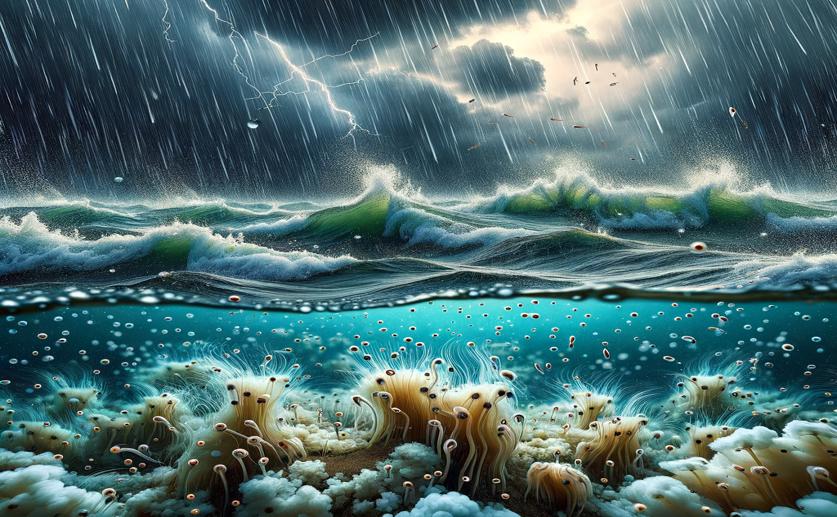
How Monsoon and Salty Sea Water Affect Plankton in the Bay of Bengal
Jim Crocker
10th March, 2024

Image Source: Natural Science News, 2024
Key Findings
- In the Bay of Bengal, tiny organisms called planktic foraminifera are found in high numbers, which helps bury carbon deep in the ocean
- These organisms thrive in warm, salty waters, especially where river input and ocean upwelling provide ample food
- Monsoon patterns, water temperature, and salinity all influence where these carbon-storing organisms are most abundant
References
Main Study
1) Intrusion of Arabian Sea high salinity water and monsoon-associated processes modulate planktic foraminiferal abundance and carbon burial in the southwestern Bay of Bengal.
Published 9th March, 2024
https://doi.org/10.1007/s11356-024-32685-4
Related Studies
2) Lack of denitrification causes a difference in benthic foraminifera living in the oxygen deficient zones of the Bay of Bengal and the Arabian Sea.
3) ForCenS, a curated database of planktonic foraminifera census counts in marine surface sediment samples.
4) Response of micro- and mesozooplankton in the southwestern Bay of Bengal to a cyclonic eddy during the winter monsoon, 2005.



 28th February, 2024 | Greg Howard
28th February, 2024 | Greg Howard